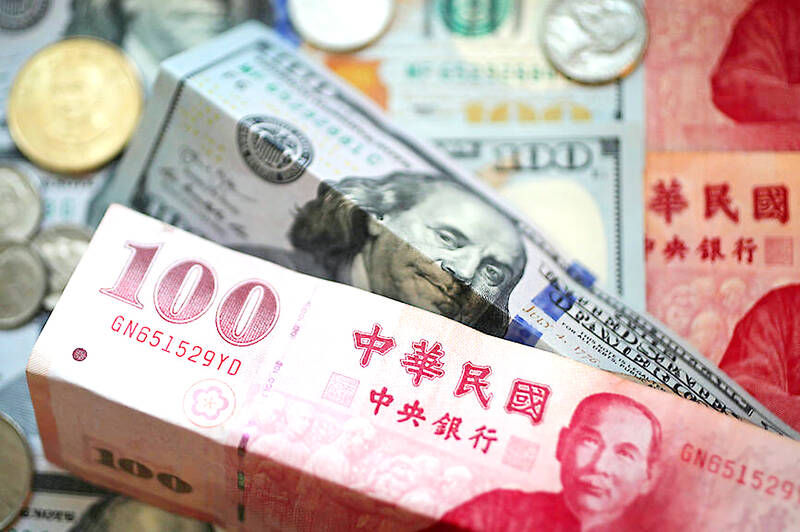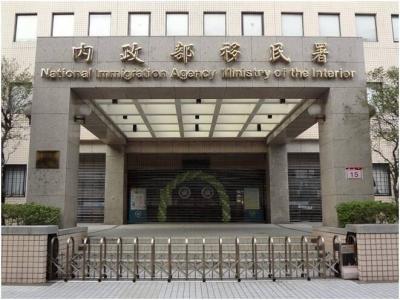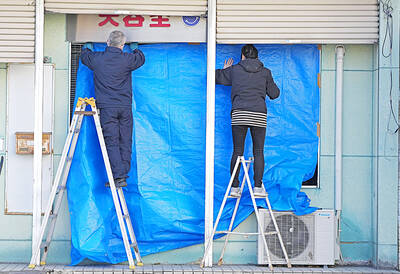President William Lai’s (賴清德) plan to further encourage Taiwanese businesses to invest in the US and increase the country’s defense budget is a good move after US President Donald Trump outlined his plan to impose tariffs on other countries, academics said.
After Trump on Thursday announced plans to impose reciprocal tariffs on exports from countries that he said have unfair trade policies toward the US, Lai held a national security meeting and laid out a plan to expand Taiwanese investment in the US and increase defense spending to 3 percent of GDP this year.
For the fiscal year 2025, the Cabinet had previously earmarked NT$647 billion (US$19.74 billion) for national defense, accounting for 2.45 percent of GDP.

Photo: CNA
“President Lai has the right idea in terms of how to manage his relationship with President Trump,” Hofstra University law professor Julian Ku (古舉倫) said.
Trump looks for allies with two key traits — the ability to manage defense with as little reliance on the US as possible, and the capacity to invest and trade with the US on terms that Trump feels are “fair,” he said.
“Lai’s goal should be to get Trump to think of Taiwan in a way that is similar to the way he currently thinks about Japan,” Ku said, adding that Lai’s proposals address both concerns that Trump is likely to raise.
However, Lai needs to deliver something tangible, given his administration cannot force Taiwanese companies to invest in the US and does not control the defense budget, which must be approved by the legislature, Ku said.
“A commitment to dramatically increase Taiwan purchases of US energy, including [liquefied natural gas] LNG, would demonstrate goodwill and get headlines,” he said, adding that such a move would show to the US that Lai has the power to offer tangible benefits that are easy to explain and understand.
Japanese Prime Minister Shigeru Ishiba met Trump for the first time on Friday last week, showing goodwill by committing to substantial investments in the US and making additional LNG purchases, which some analysts viewed as a successful diplomatic move.
Ku the following day wrote on X that Taipei should follow suit by buying as much US LNG as possible and suggested that it could be a way for the government to remind Trump that the nation would not be able to pay for the LNG if China blockades Taiwan.
Washington-based think tank Brookings Institution nonresident senior fellow Richard Bush called Lai’s plan “good will initiatives,” but said he was uncertain how the Trump administration would respond to them.
“More importantly, I suspect that, like the first Trump administration, this one does not have a coherent approach to Taiwan policy, at least as yet,” he said. “I personally believe that for the United States to make public complaints about the policies of a good friend like Taiwan is not necessarily conducive to effective bilateral cooperation based on shared interests.”

A small number of Taiwanese this year lost their citizenship rights after traveling in China and obtaining a one-time Chinese passport to cross the border into Russia, a source said today. The people signed up through Chinese travel agencies for tours of neighboring Russia with companies claiming they could obtain Russian visas and fast-track border clearance, the source said on condition of anonymity. The travelers were actually issued one-time-use Chinese passports, they said. Taiwanese are prohibited from holding a Chinese passport or household registration. If found to have a Chinese ID, they may lose their resident status under Article 9-1

Taiwanese were praised for their composure after a video filmed by Taiwanese tourists capturing the moment a magnitude 7.5 earthquake struck Japan’s Aomori Prefecture went viral on social media. The video shows a hotel room shaking violently amid Monday’s quake, with objects falling to the ground. Two Taiwanese began filming with their mobile phones, while two others held the sides of a TV to prevent it from falling. When the shaking stopped, the pair calmly took down the TV and laid it flat on a tatami mat, the video shows. The video also captured the group talking about the safety of their companions bathing

A classified Pentagon-produced, multiyear assessment — the Overmatch brief — highlighted unreported Chinese capabilities to destroy US military assets and identified US supply chain choke points, painting a disturbing picture of waning US military might, a New York Times editorial published on Monday said. US Secretary of Defense Pete Hegseth’s comments in November last year that “we lose every time” in Pentagon-conducted war games pitting the US against China further highlighted the uncertainty about the US’ capability to intervene in the event of a Chinese invasion of Taiwan. “It shows the Pentagon’s overreliance on expensive, vulnerable weapons as adversaries field cheap, technologically

Starting on Jan. 1, YouBike riders must have insurance to use the service, and a six-month trial of NT$5 coupons under certain conditions would be implemented to balance bike shortages, a joint statement from transportation departments across Taipei, New Taipei City and Taoyuan announced yesterday. The rental bike system operator said that coupons would be offered to riders to rent bikes from full stations, for riders who take out an electric-assisted bike from a full station, and for riders who return a bike to an empty station. All riders with YouBike accounts are automatically eligible for the program, and each membership account